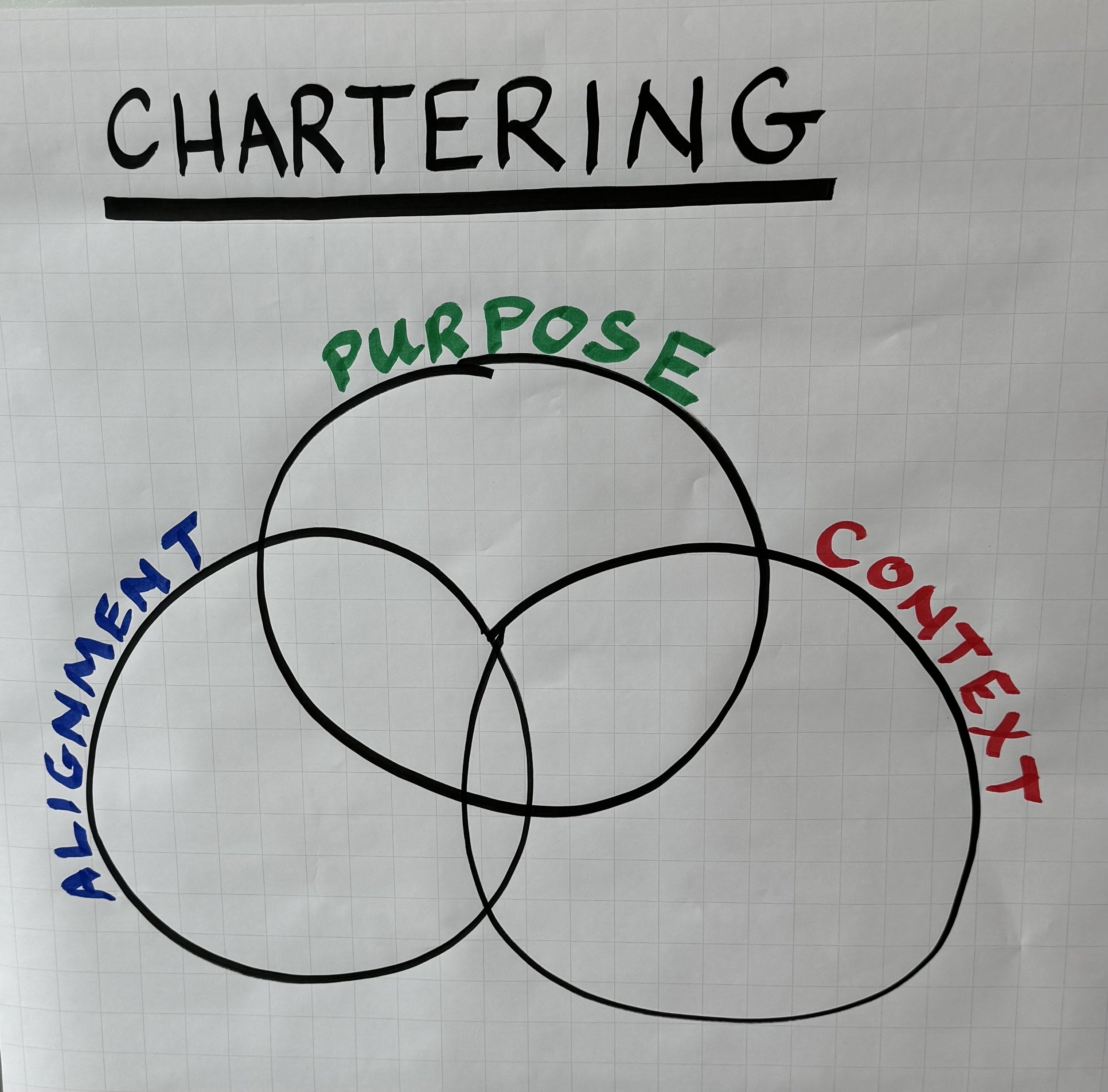What is a working agreement? — "We work together best when…”
/This post is the 6th in a series on agile chartering inspired by Diana Larsen and Ainsley Nies' book, Liftoff. The first three posts address artifacts related to Purpose. The next three deal with Alignment. This post wraps up Alignment with a look at working agreements.
A social contract
Working agreements serve as a social contract for behaviors to which the team aspires. Existing default or routine team behaviors do not need a working agreement, rather these agreements are reserved to support in-process behavioral changes. Often an agreement is expressed by completing the sentence, “We work together best when…” An example might be
We reflect on the results of our work and decide next steps based on what we have learned from those results.
Working agreements are explicit and made visible to remind everyone of the team that they wish to become. By being present in every action and interaction, working agreements reinforce positive growth through practice and reflection.
Continuous Improvement (AKA, The yellow brick road)
While simple rules are the foundation upon which team behaviors are built, working agreements foster continuous improvement in those behaviors. Like mission tests, working agreements are defined and testable; however, unlike mission tests, they do not typically have a deadline or due date. Instead, the team keeps a working agreement in place until either the aspirational behavior becomes a team norm or the team reconsiders the working agreement and abandons it. While mission tests instill discipline in delivery, working agreements instill discipline in team improvement.






